The dissemination of culture
a model with local convergence and global polarization
robert axelrod
Journal of Conflict Resolution, Vol 41 No 2, April 1997 203-226
presented by Talha OZ
Computational Analysis of Social Complexity
April 2014
approaches to social influence
Culture assumed to satisfy two simple premises:
- Likeliness of interaction ~ their common cultural attributes
- Interactions => increase the number of attributes they share
Anthropologists have two approaches for Cultural Change:
- Diffusionists treated a given culture as a set of distinct traits
- A system of symbols by which people confer significance
Neither approach has done much in formalizing its ideas in formal models whose implications can be systematically explored. Other social scientists modeled social influence:
[Go down for those models of change !]
theories of changes
Other social scientists provided models of social influence
- Spread of smoking among teenagers: behavior <=> friendship
- Attitude change in political campaigns
- Social influence in formal organizations
Theories of changes in other domains
-
Spread of social norms
-
Spread of knowledge
-
Diffusion of innovations
-
Establishment of technical standards
-
Genetics and learning in social influence
All treat each feature of a culture independently of the others
MAINTENANCE of differences
- Range of social influence = culture ?
- R+ language, art, technical standards, and social norms
- C: set of individual attributes subject to social influence
- Some important topics in which becoming similar/retaining differences is central? [Go down]
- How influence each other & why we do not all become alike ? [Go right]
important topics
-
State formation [facilitated when its people have shared meanings & interlocking habits of communication]
- nationalism
- Succession conflicts [occur around unresolved conflicts especially when they have a clear territorial basis]
- lines of fracture survived decades of efforts of USSR
- Transnational integration [depends in large part on the extent to which norms shared over extensive territories]
- EU, UN, WTO
- Domestic cleavages [largely shape everyday domestic politics of democracies]
- multiculturalism debate in the US
[Go back up !]
Why differences are durable
- Social differentiation, identification
- Fads and fashions
- Preference for extreme views
- Drift. Random changes. (e.g. language differentiation)
- Geographic isolation. Segregation
- Specialization. Interests resistant to social influence
- Changing environment or technology. Variety in response
"the transfer of ideas mostly occur between individuals ... who are similar in certain attributes such as beliefs, education, social status, and the like."
The study
What is new in regards of social influence?
- Effect of one cultural feature depends on other
- Similar individuals are more likely to influence each other
What are the principles of the methodology?
- Agent-based modeling
-
local actors, observed emergent properties of the system
-
single type of agents, no church fathers, no political leaders
-
simple rules for giving/receiving influence, no profit maximization, no learning, just adapting environment
The model
Culture: 5 features, 10 traits/ftr, [82330,67730] (40% sim.)
Env: 10x10 grid, four neighbors, no movement, not Torus
-
pick an agent in random, pick one of its neighbors
- P(interact) = cultural sim., adapt a random feature
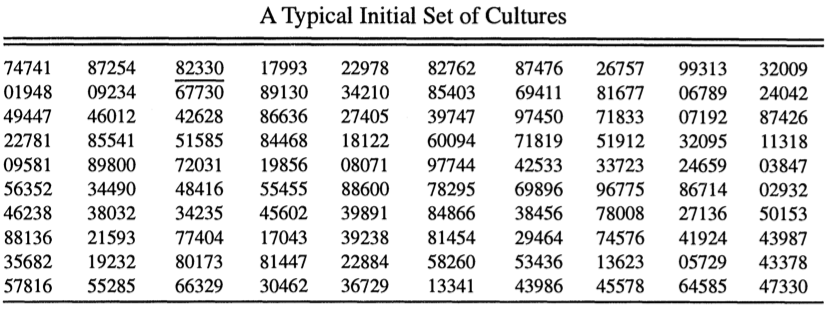
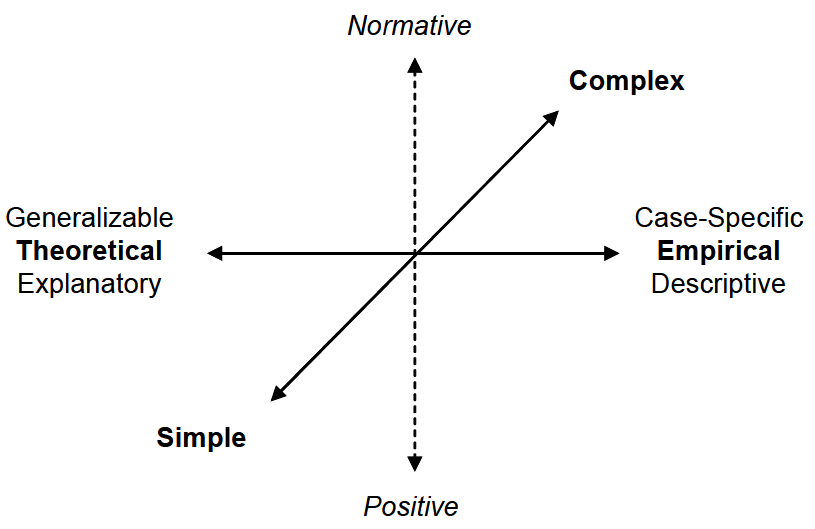
the emergence of regions of shared culture
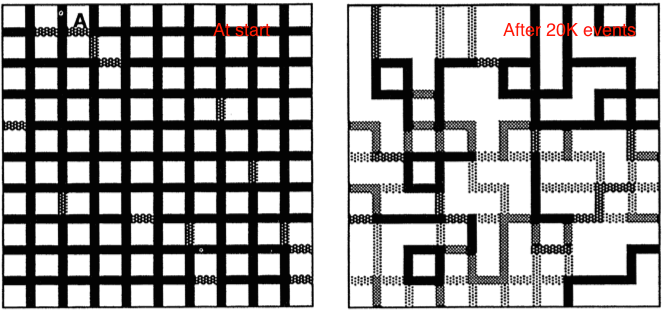
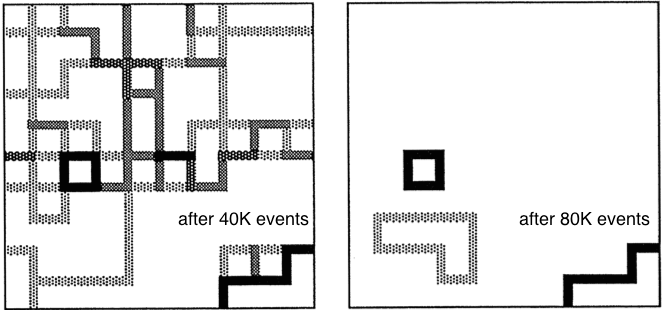
THE NUMBER OF STABLE REGIONS
Avg # of stable regions, territory of 10x10 sites
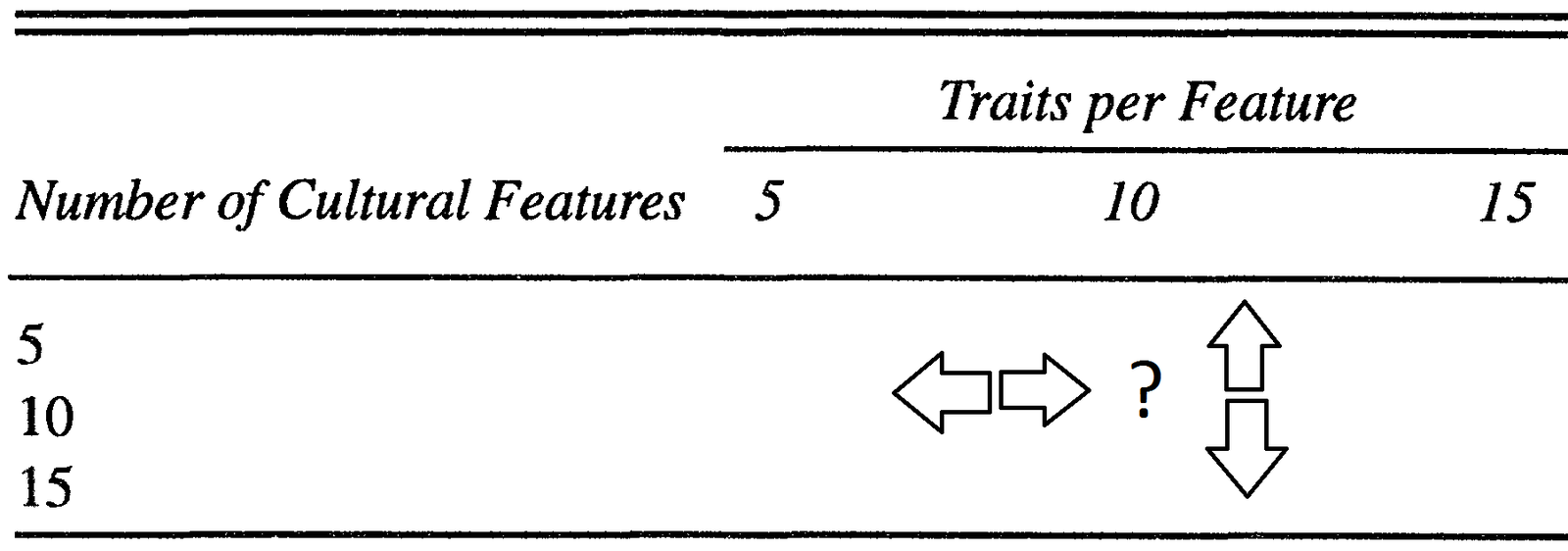
How does # of stable regions change as we increase
-
traits per feature while keeping # of features constant?
- # of cultural features and keep traits per feature constant?
[Go down for the answer !]
The number of stable regions
Avg # of stable regions, territory of 10x10, each cond. 10 runs

Variation of sample run: 14% runs => 1 s.r. ; 10% runs => 6+ s.r.
other experiments
Range of interaction: 4,8,12 => fewer stable regions
Size of the territory: More sites, more s.r.?
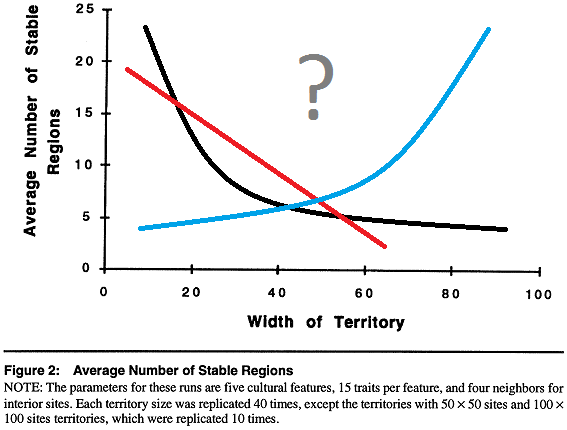
Analysis of histories
Dialects: 1111 1111 1111 1111 1112 1112
Cultural zones: set of compatible contiguous sites ?
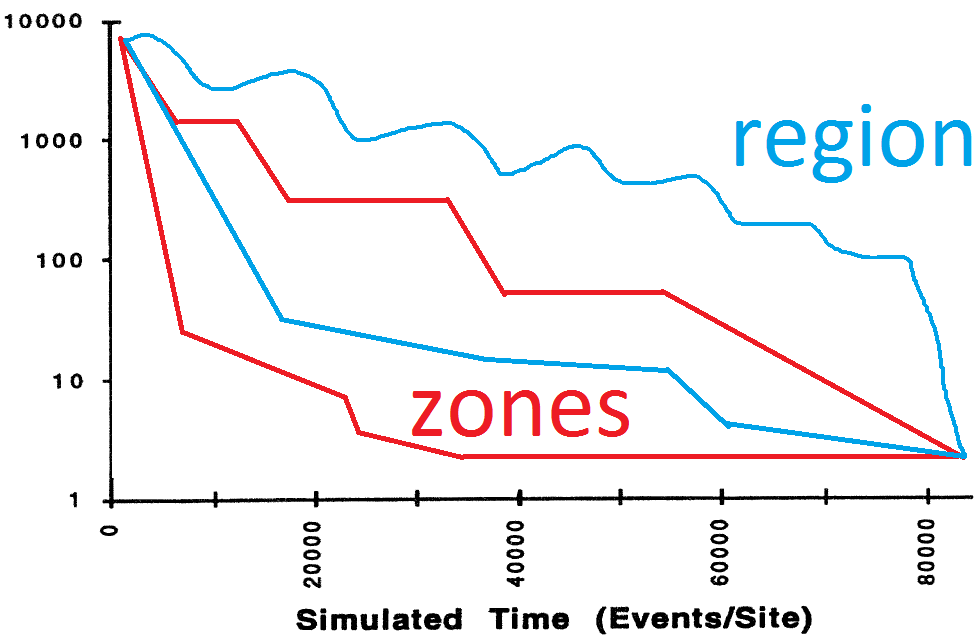
Dissolution of cultural boundaries [size ~ time]
regions vs zones
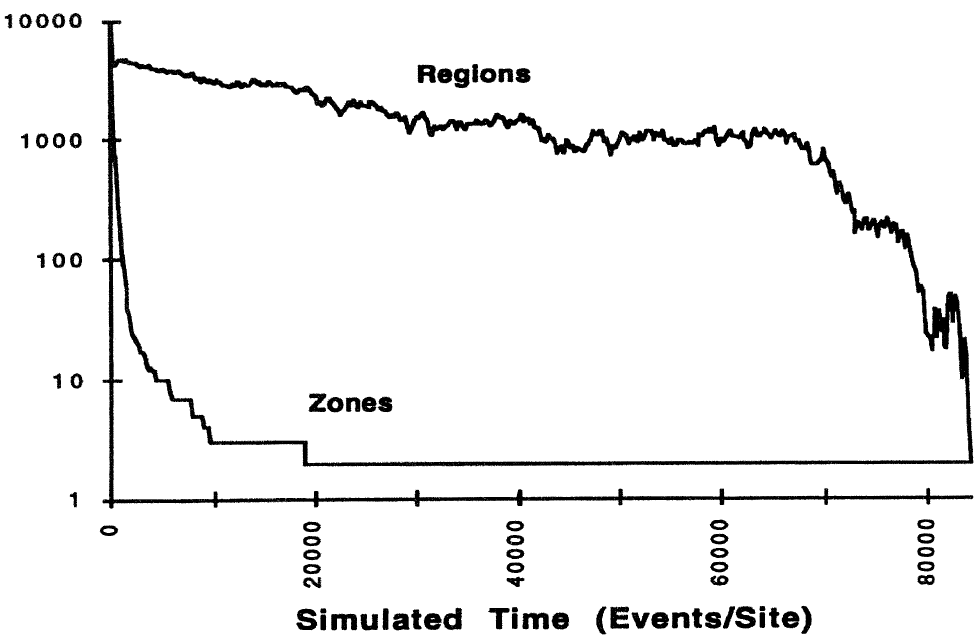
Discussion
- intuition is not a very good guide
- simplicity VS difficulty in anticipation
- # of s.r. ~ traits/feature [intuitive]
- # of s.r. X range of interaction [intuitive]
-
# of s.r. X # of cultural features [counter intuitive]
- # of s.r. X territory size [counter intuitive]
Download & Play:
- http://ccl.northwestern.edu/netlogo/models/community/Dissemination%20of%20Culture
-
http://www.openabm.org/model/3705/version/2/view [Extended version]
abstract
"with probability equal to their cultural similarity, a randomly chosen site will adopt one of the cultural features of a randomly chosen neighbor"
-
despite convergence, differences continue to exist in
- beliefs, attitudes, behavior of individuals & groups
- basic premise on social influence
- actor's similarity to its neighbor ~ adopting one of his traits
- previous models of social influence & cultural change
- treat features one at a time
- Axelrod [Go down for model classification discussion]
- interaction between different features
- how local convergence can generate global polarization
- Simulation results: # of stable homogeneous regions
The Dissemination of Culture
By Talha OZ
The Dissemination of Culture
- 1,991



